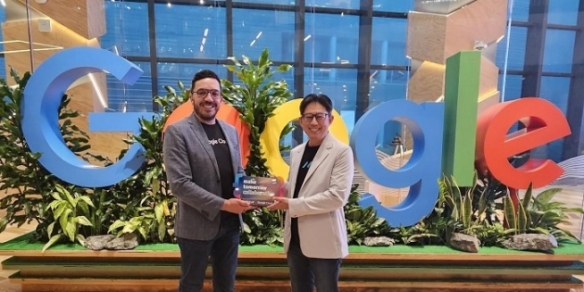More university research to be commercialized via L2M
By Digital News Asia October 4, 2012
- Higher learning and research institutes to get boost for high-potential R&D
- Part of the education aspect of Malaysia’s Economic Transformation Program
 A GROUP of government agencies, non-governmental organizations (NGOs) and industry players in Malaysia have officially announced the Lab2Market (L2M) commercialization program, through which they will collaborate to help institutions of higher learning (IHLs) and research institutions commercialize their research.
A GROUP of government agencies, non-governmental organizations (NGOs) and industry players in Malaysia have officially announced the Lab2Market (L2M) commercialization program, through which they will collaborate to help institutions of higher learning (IHLs) and research institutions commercialize their research.
The group will accelerate returns of investment and income for these institutions by enhancing the commercialization of their research findings and innovations with high potential, it said in a statement.
The L2M program is in fact now in its second cycle, which began in July 2012, after having completed its pilot which was launched in March 2012. Oct 3 also marked the climax of Cycle 2 with the Shark Round pitching session, where 24 research teams had the opportunity to pitch to evaluators and potential investors.
L2M, which brings together industry players, innovators and investors, is part of Entry Point Project (EPP) 9: Advanced Engineering, Science and Innovation Cluster, under the Education National Key Economic Area (NKEA) of the Malaysian Government’s Economic Transformation Program (ETP).
This EPP aims to increase university revenue from the commercialization of R&D.
“The Ministry of Higher Education (MOHE), via its National Higher Education Strategic Plan (PSPTN), is committed towards nurturing and developing the nation’s intellectual capital to propel Malaysia forward,” said Associate Prof. Dr Harshita Aini Haroon, director of the Program Management Office at MOHE.
“This collaboration … is very much welcome, as this is indeed an avenue for researchers to move on to the next steps towards commercialization of their products.”
L2M is facilitated by the TiE (The Indus Entrepreneurs) Malaysia Chapter (TiE Malaysia) in collaboration with Cradle Fund Sdn Bhd, Agensi Inovasi Malaysia (AIM) and Technology Park Malaysia (TPM). It aims to match start-ups or researchers with good potential, as identified by Cradle and AIM, with interested investors.
TiE Malaysia coordinates and prepares L2M participants for entry into the business world by arranging training, pitching, mentoring and networking sessions.
“L2M provides a catalyst for commercialization, bringing innovators and investors together,” said said Puvanesan Subenthiran, president of TiE Malaysia.
He added that TiE Malaysia has been in existence since 2002 to bridge entrepreneurs from Malaysia, the United States, India and the world through active participation in TiE Global, “the world’s largest non-profit organization promoting entrepreneurship.”
“Scientists and researchers in Malaysia do not lack good ideas, but we need to step up interdisciplinary collaboration and bring together industry players, innovators and investors to increase potential revenue and accelerate returns from research via successful collaborations,” said Cradle CEO Nazrin Hassan.
 Recipients of Cradle’s U-CIP Catalyst pre-seed grant for university researchers were amongst the success stories emerging from L2M’s pilot cycle.
Recipients of Cradle’s U-CIP Catalyst pre-seed grant for university researchers were amongst the success stories emerging from L2M’s pilot cycle.
Dr Shahrel Azmin Suandi and his team from Universiti Sains Malaysia (USM) received assistance to further develop their Face Biometric for Attendance and Recognition System (FaceBARS) real-time facial recognition technology innovation for identity verification in security systems, while Dr Lawrence Khoo from Universiti Teknologi Malaysia (UTM) and his team received assistance to further their research on tyre technology.
“It’s been proven in successful economies that the only way for true innovation to occur is through close collaboration between industry and academia,” said AIM chief executive officer Mark Rozario (pic).
“Universities provide a dense population of enthusiastic and energetic talent, as well as cutting edge ideas and research capabilities, which can yield many discoveries with viable commercial potential.
“The role of the Government, through its innovation policy formulation and implementation arms such as AIM, is to encourage these cross-sector partnerships by not only selecting the academic innovations with most commercial potential and presenting them in a way most attractive to investors and businesses to take forward, but to also involve industry players early in the innovation life-cycle to enable more market-driven applied R&D in universities,” he added.


